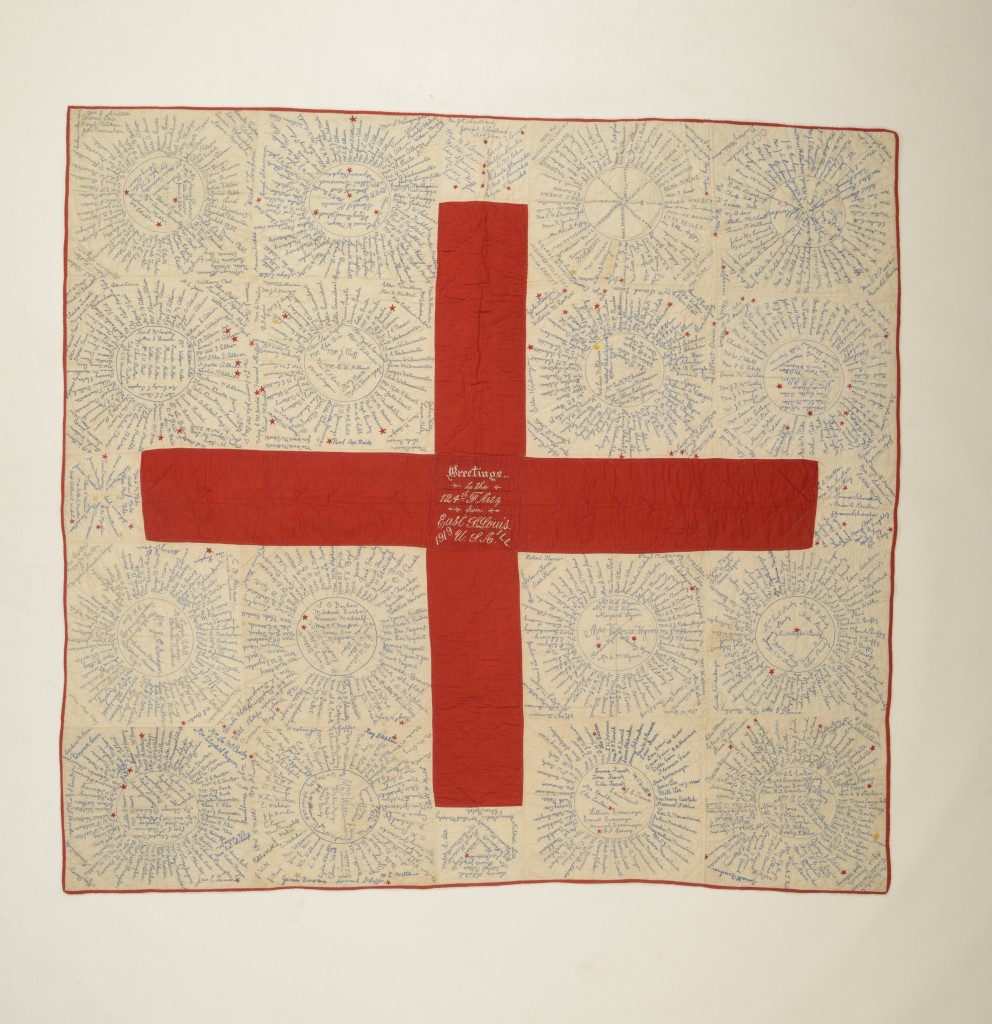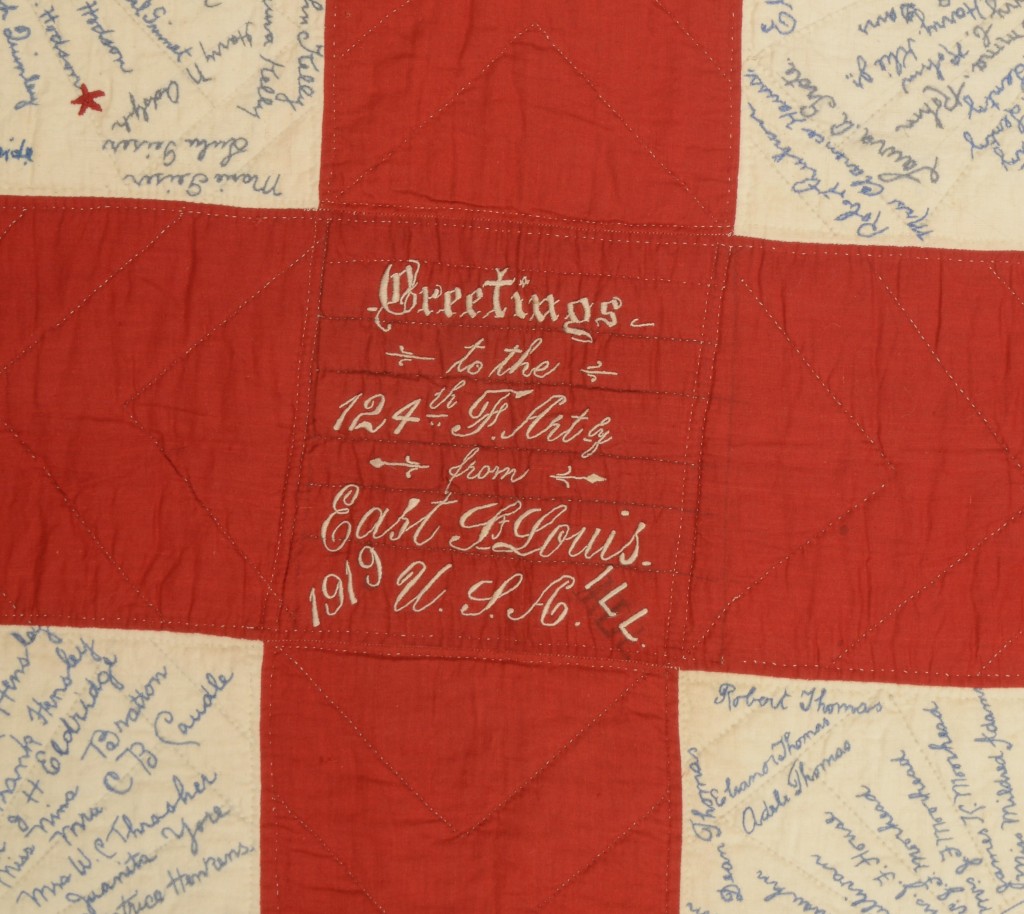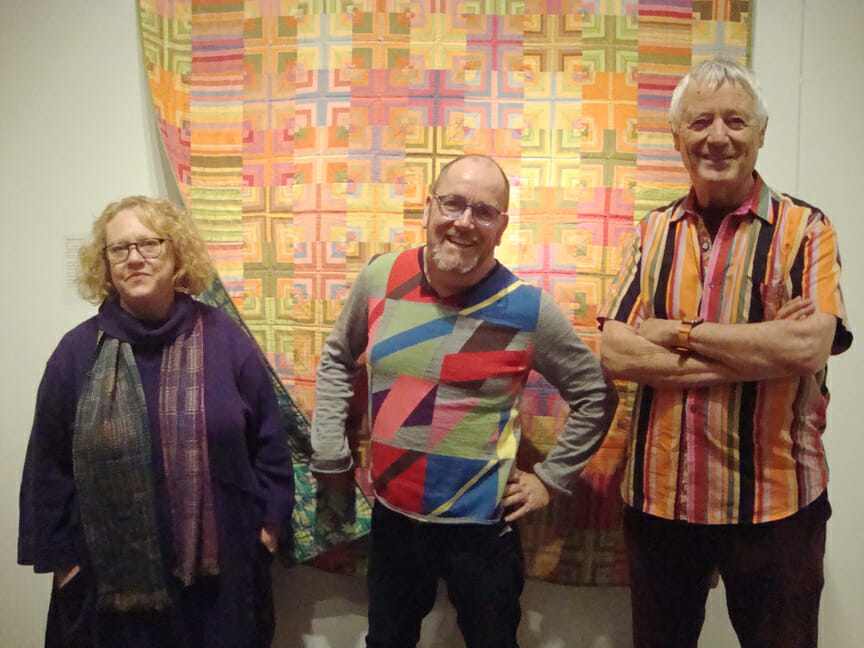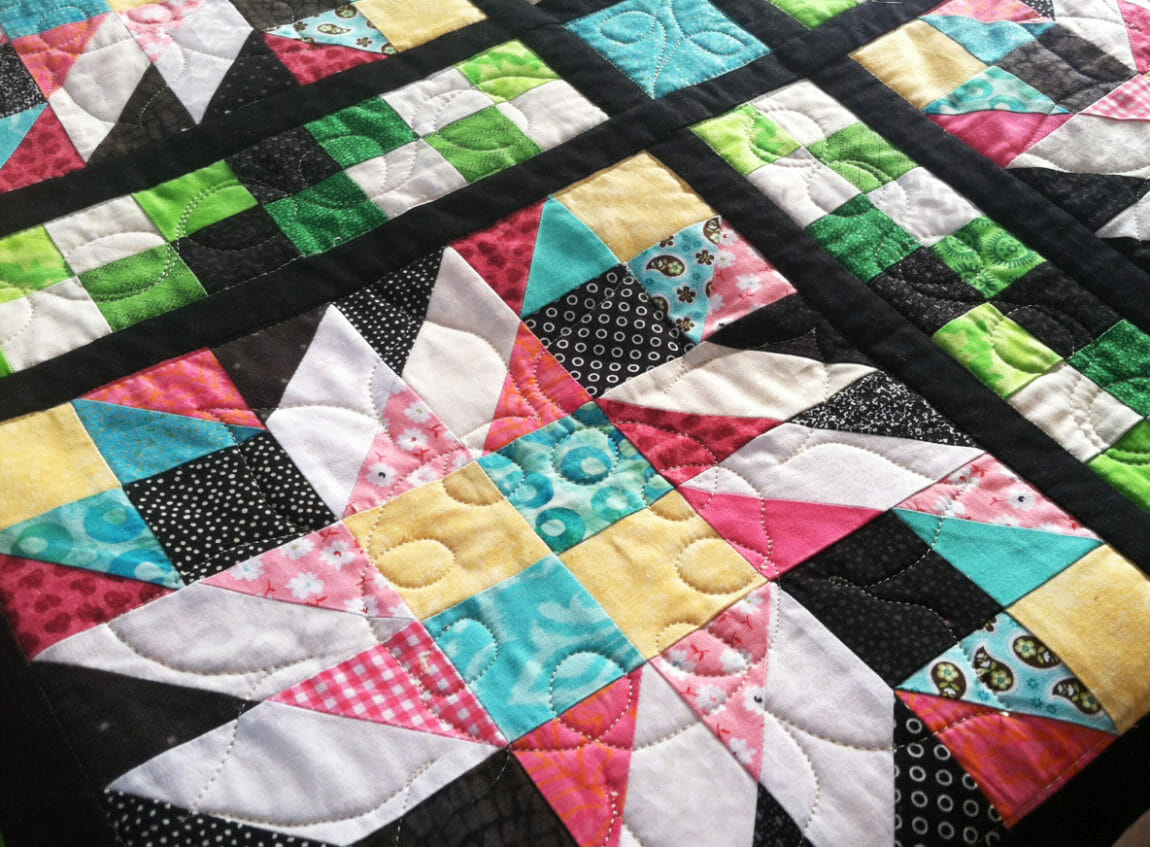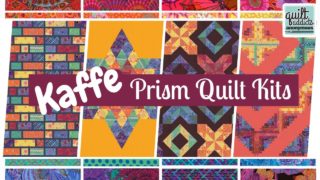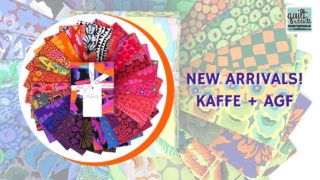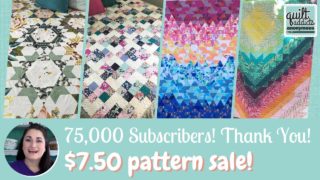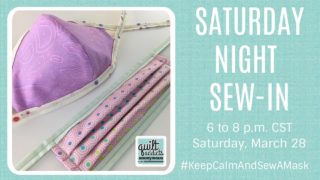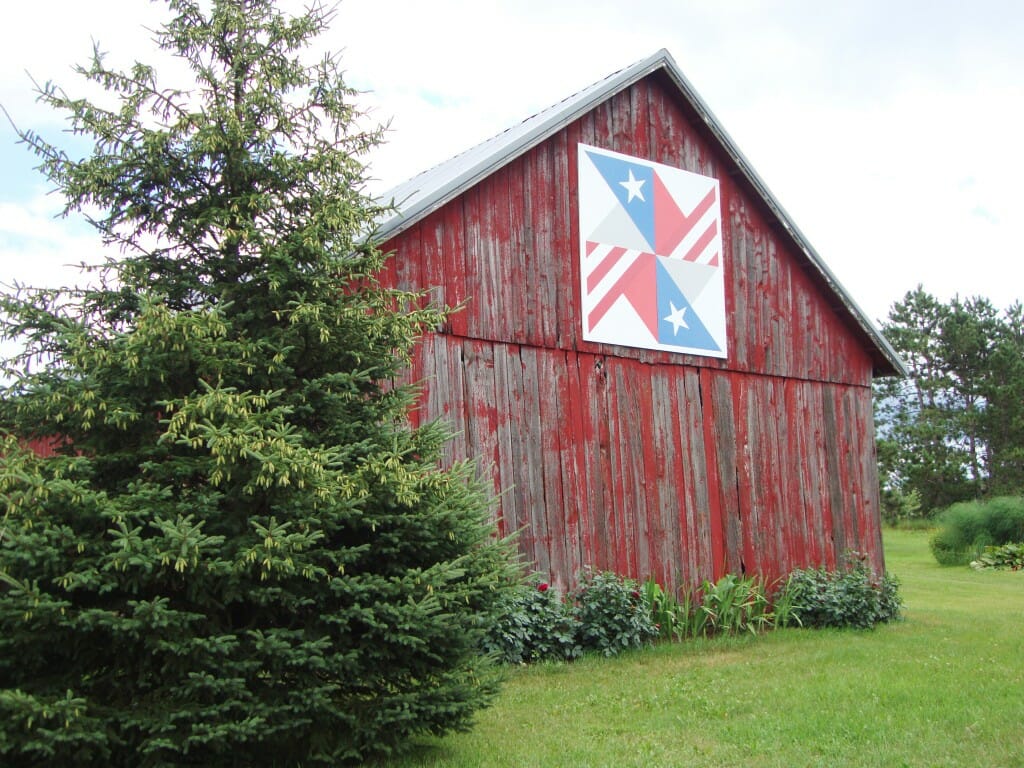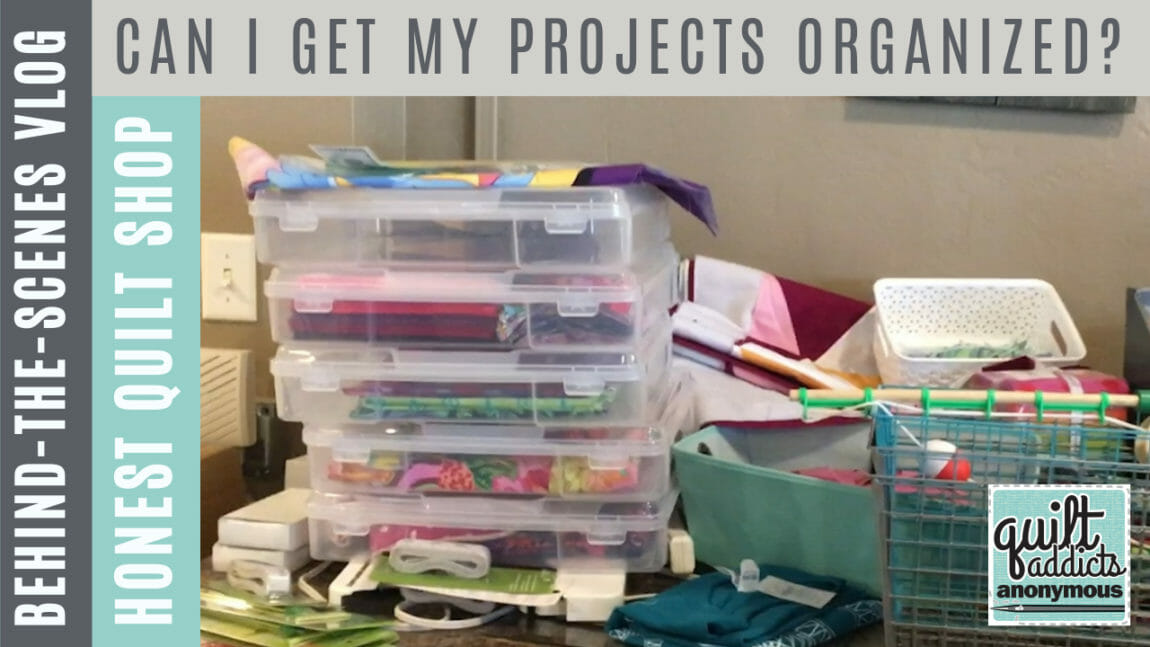
The Eleventh Hour features rare quilts from WWI at The National Quilt Museum
A rare collection of quilts from the World War I era is on display at The National Quilt Museum in Paducah, Kentucky, through February 9, 2016.
“The Eleventh Hour: Quilts of World War I” curated by Sue Reich and provided by the McCraken Public Library, features a collection of Red Cross quilts and signature quilts made to help raise money to send supplies to U.S. troops fighting what was then known as “The Great War.”
Sandwiched in between the better known eras of the Civil War quilts and Depression era 1930s, quilts from 1914 to 1919 rarely survived in part due to the flu pandemic that killed up to 100 million people worldwide between 1918 and 1919, hitting adults in their mid-20s particularly hard instead of the typical elderly and children that are normally most susceptible to developing severe complications from the flu.
“It was such at people would sit down to play bridge, and by the next morning members of the bridge club would be dead,” said Judy Schwender, curator of collections at The National Quilt Museum. “Sometimes the quilts they were using at the time would have been burned to prevent the spread of the flu.”
Of the quilts that did survive many are made in red and white as part of a fundraising effort for the Red Cross. Many also are signature quilts. They raised money by selling squares to sign. When people bought a square to sign, they were also buying a raffle entry for a chance to win the quilt. Most are not fancy. They simply are what they appear to be, a Red Cross fundraising quilt.
“It is just an interesting group of quilts. It really opens a lens on a certain period of time,” Schwender said adding that while quilters make quilts for all kinds of causes today, they often are works of art auctioned off to raise money instead of a signature quilt or a design that clearly indicated what it was the quilt was supporting. “But then you were supporting the Red Cross, pure and simple.”
Several of the quilts are also made out of wool, instead of the normal cotton. That’s because in the 1910s central heating still wasn’t standard in most households.
“We forget today because everyone today has central heating, but if you didn’t have central heating, you piled quilts on the bed,” Schwender said. “If there were wool ones that weight a short ton, you couldn’t move one you put it on the bed, but you stayed warm.”
The colors and designs of the Eleventh Hour quilts may be a stark contrast to quilters used to seeing the bright pastels and cheery designs that came after in the 1930s, a time when quilts were saved abundantly. Even though the decade that followed was still difficult, Schwender thinks she understands the change in mindset that evoked such a dramatic shift in color and pattern following World War I.
“If you think about your own self and what you like to sew and what catches your eye, the thing that catches your eye is what’s new,” Schwender said. “All the colors changed after the war. All of a sudden those bright colors came in. … Even though here in the States we weren’t experiencing war for years and years and our cities and towns weren’t blown up, we still lost people. They were ready for something fresh.”
The National Quilt Museum is located at 215 Jefferson St., Paducah, KY. Click here for more information about The Eleventh Hour: Quilts of World War I.

